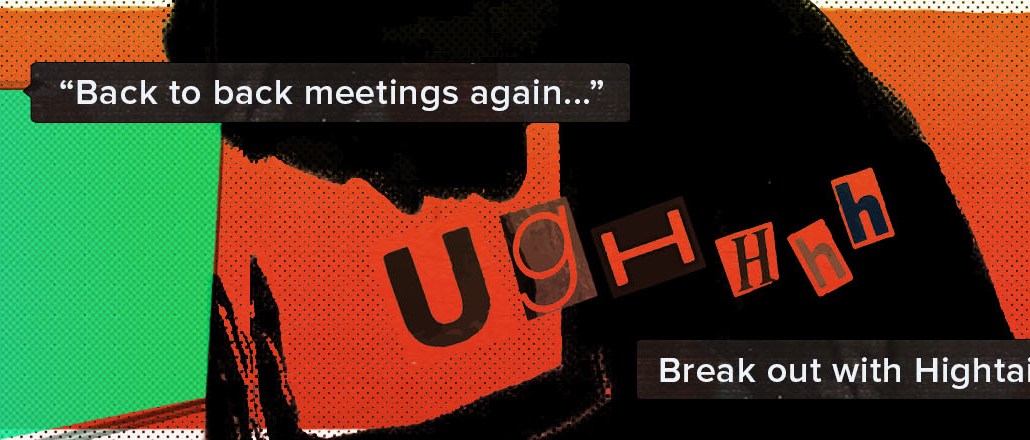Save 50% on a 3-month Digiday+ membership. Ends Dec 5.
Agencies on the creative process: “I can’t believe we’re still doing it this way.”

It’s 2016, and the tools of distribution reflect our highly digital, data-rich reality. Marketing automation tools allow us to easily reach hundreds of segments with the appropriate content, and social automation tools help us stay on top of an ever-increasing number of social channels requiring multiple posts per day. Unfortunately, the creative development process that fuels these campaigns just hasn’t caught up to the tools that distribute them.
All it takes is one missed email–“You mean the changes that were in my message from last week?”– to make creative teams sigh, “I can’t believe we’re still doing it this way.” It’s sad but true. For almost every creative process that digital communications have improved, there are elements that remain stuck in the past.
Project creation
Old way: Paper pushing
Physical time sheets and other administrative relics are “trappings of traditional advertising,” according to Josh Payton, vice president of UX from Huge. It turns out that it’s not only the accounting and administrative departments that are overusing trees. “I still see agencies using a lot of paper and routing a lot of paper,” said Mike Weed, creative director at Spawn. There’s something nostalgic about passing back and forth tangible mockups of a design and covering it in handwritten comments, but doing so today means physically scattering the elements of a creative process that could all be happening in one place.
New way: Creating a digital office space
Digital files are easier to pass around, not to mention better for the environment, especially now that agencies work with other agencies that work with freelancers across various zip codes. Kat Chan works at Protein, an agency where they use their own operating system that “essentially houses everything.” Clients and agency members can access works in progress as well as information on industry trends in one consolidated space.
Communication
Old way: Eternally emailing
Tim Leake, SVP of creative, marketing, and innovation at RPA, called emails categorically “a really bad way to communicate” and “a horrible collaboration tool.” This is because people write emails on their own time, not in real time.
Also, emails lack visual language (and no, emojis don’t count). Instead, you’ve got to use circuitous language like “that part three-ish minutes into the video where the guy points to the infographic” to comment indirectly on a visual product.
New way: Conversational collaboration
With “hundreds of Google spreadsheets,” unruly email threads, and clients who eschew all of the above for Dropbox, Chan from Protein explained how her boss has moved on from the email mess. “Since we’ve started using Slack, emails have cut down significantly,” she said. “My boss basically refuses to read emails anymore.” Real-time conversation always keeps the process moving at a faster clip.
Project planning
Old way: Meeting every morning
Oftentimes, “meetings are a chance for people to talk in circles around an issue,” according to Leake. “The end result…is, ‘Let’s regroup tomorrow and continue this discussion.’” And how about when those meetings occur daily? “There’s not much happening from one day to another,” said a senior art director at a New York agency who wished to remain anonymous.
New way: Digital project management
Not only are there numerous digital systems that keep teammates up-to-date on project schedules, there are also countless tools that let creatives bounce ideas off one another outside of set meeting times. “Whenever we try to collab and say we’ve got half an hour on this, that’s not usually enough time,” said Leake. Progress-tracking tools and even instant messaging apps like Slack let creatives spend more time on their work and less time talking about it in drawn-out meetings—meetings that end as soon as team members leave the room. “A collaboration needs to be a bit more open-ended and a bit more fluid.”
The creative process
Old way: Moving step by step by step…
The creative process at agencies tends to get divvied up something like this: “You have an account man, he goes and buys the client drinks and talks him up…Then you have a project manager who just focuses on the one thing that’s two feet in front of his face right now. Then you have the creative director who’s just looking at more…look and feel, tone of voice kind of stuff,” explained Payton from Huge. This cordoned off approach discounts a team’s collaborative efforts and leads to bottlenecking, where ideas get stuck somewhere in the middle of this painstaking process.
New way: Breaking down the walls
Collaboration is more than possible thanks to digital platforms that let entire teams in on projects from start to finish and prevent client interests from getting lost in endless games of broken telephone. It’s important to “break down the walled approach of ‘I do my job and pass the baton to somebody else,’” said Leake. “I don’t think that works in the digital world.”
The sooner creatives acknowledge that digital tools have shattered these walls, the sooner they can shepherd their processes out of the Stone Age.
More in Marketing

Future of Marketing Briefing: The tells and flops that will define Omnicom-IPG mega holdco
The real story will sit in how this newly fused entity behaves — whether it breaks from the patterns that defined both parents or simply scales them.

In Graphic Detail: CMOs at a crossroads of power and proof
CMOs are closing out another year defined by churn and shifting ground.

As Black Friday nears, fake apologies from brands are all over Instagram
Brands have taken to social media in advance of Bliack Friday to ask followers for forgiveness. The catch: They’re apologizing for their products being too good.





